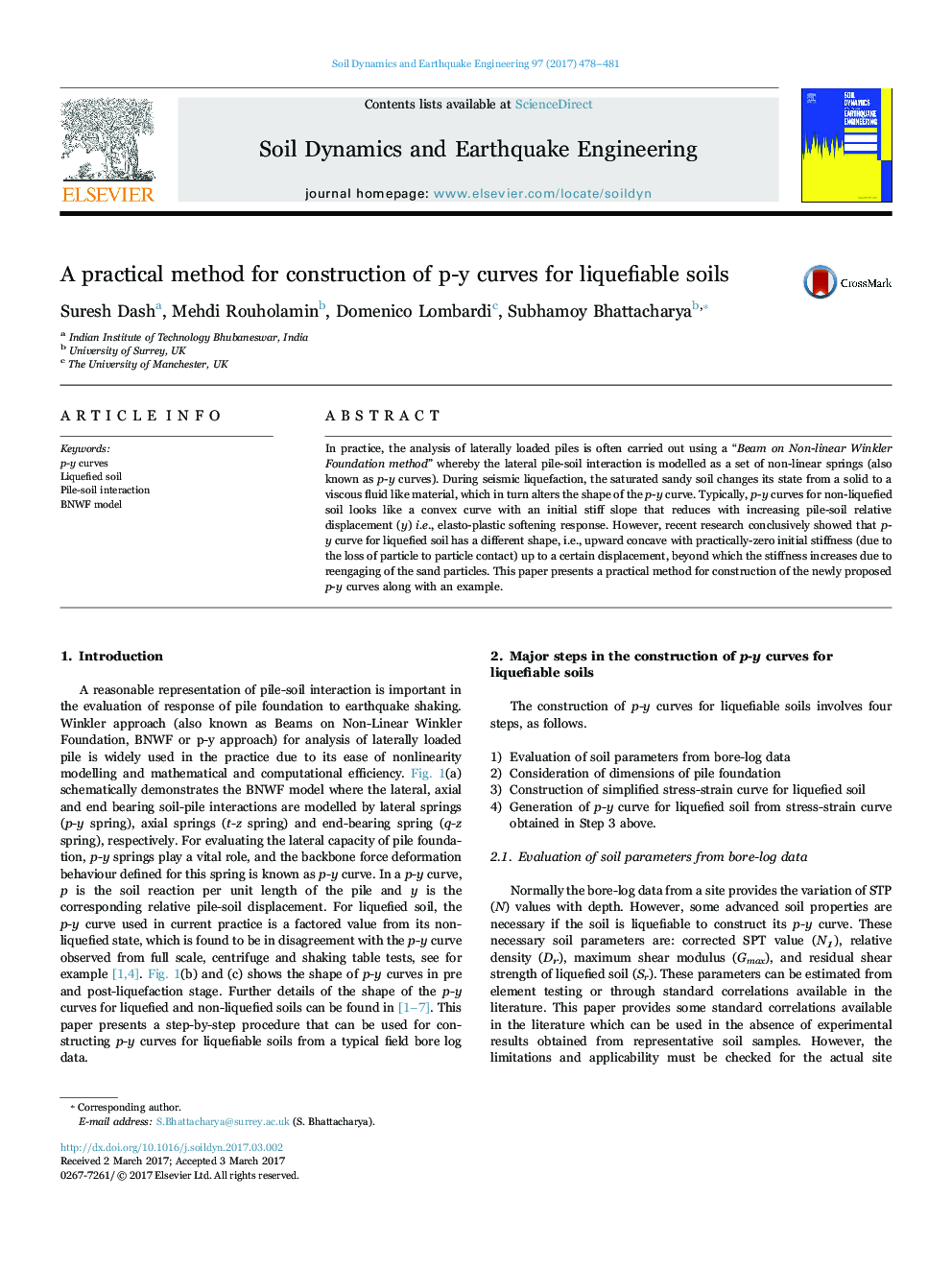| Article ID | Journal | Published Year | Pages | File Type |
|---|---|---|---|---|
| 4927142 | Soil Dynamics and Earthquake Engineering | 2017 | 4 Pages |
Abstract
In practice, the analysis of laterally loaded piles is often carried out using a “Beam on Non-linear Winkler Foundation method” whereby the lateral pile-soil interaction is modelled as a set of non-linear springs (also known as p-y curves). During seismic liquefaction, the saturated sandy soil changes its state from a solid to a viscous fluid like material, which in turn alters the shape of the p-y curve. Typically, p-y curves for non-liquefied soil looks like a convex curve with an initial stiff slope that reduces with increasing pile-soil relative displacement (y) i.e., elasto-plastic softening response. However, recent research conclusively showed that p-y curve for liquefied soil has a different shape, i.e., upward concave with practically-zero initial stiffness (due to the loss of particle to particle contact) up to a certain displacement, beyond which the stiffness increases due to reengaging of the sand particles. This paper presents a practical method for construction of the newly proposed p-y curves along with an example.
Keywords
Related Topics
Physical Sciences and Engineering
Earth and Planetary Sciences
Geotechnical Engineering and Engineering Geology
Authors
Suresh Dash, Mehdi Rouholamin, Domenico Lombardi, Subhamoy Bhattacharya,
